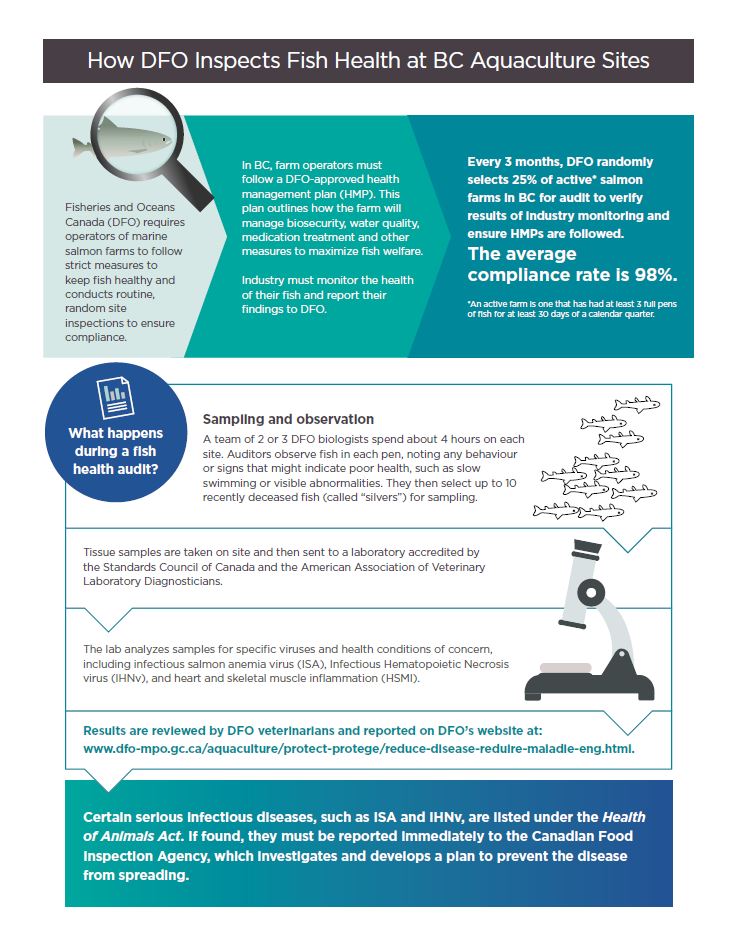How DFO inspects fish health at BC aquaculture sites

Description: How DFO inspects fish health at BC aquaculture sites
Fisheries and Oceans Canada (DFO) requires operators of marine salmon farms to follow strict measures to keep fish healthy and conducts routine, random site inspections to ensure compliance.
In BC, farm operators must follow a DFO-approved health management plan (HMP). This plan outlines how the farm will manage biosecurity, water quality, medication treatment and other measures to maximize fish welfare.
Industry must monitor the health of their fish and report their findings to DFO.
Every 3 months, DFO randomly selects 25% of active* salmon farms in BC for audit to verify results of industry monitoring and ensure HMPs are followed. The average compliance rate is 98%
*An active farm is one that has had at least 3 full pens of fish for at least 30 days of a calendar quarter.
What happens during a fish health audit
Sampling and observation
A team of 2 or 3 DFO biologists spend about 4 hours on each site. Auditors observe fish in each pen, noting any behaviour or signs that might indicate poor health, such as slow swimming or visible abnormalities. They then select up to 10 recently deceased fish (called “silvers”) for sampling.
Tissue samples are taken on site and then sent to a laboratory accredited by the Standards Council of Canada and the American Association of Veterinary Laboratory Diagnosticians.
The lab analyzes samples for specific viruses and health conditions of concern, including infectious salmon anemia virus (ISA), Infectious Hematopoietic Necrosis virus (IHNv), and heart and skeletal muscle inflammation (HSMI).
Results are reviewed by DFO veterinarians and reported on DFO's website at: Reducing disease risks
Certain serious infectious diseases, such as ISA and IHNv, are listed under the Health of Animals Act. If found, they must be reported immediately to the Canadian Food Inspection Agency, which investigates and develops a plan to prevent the disease from spreading.
Facility and records review
Auditors use a checklist of 60 items to ensure the farm is operating as licensed and following its HMP:
- Collection and classification of deceased fish is frequent
- Fish behaviour and health are monitored
- Biosecurity protocols, such as equipment disinfection, visitor restriction and the use of foot baths, are followed
- Feed, nutrition and medication records are complete and up to date
- Water quality is monitored routinely and can be addressed if needed
Any deficiencies are noted and reviewed with the farm operator so that improvements can be made. Results are also reported publicly on DFO's website.
DFO performs about 120 fish health audits each year. On average, the industry compliance rate is 98%
DFO's regulation and monitoring of aquaculture in BC supports an environmentally sustainable industry that helps remove pressure from wild salmon stocks.
- Date modified: